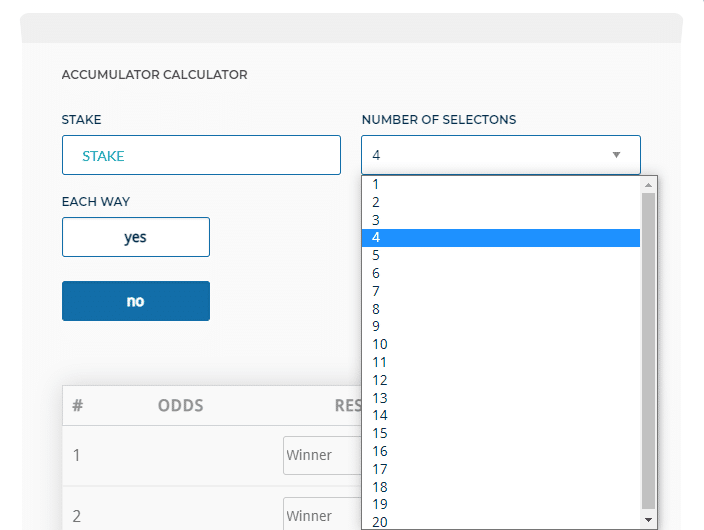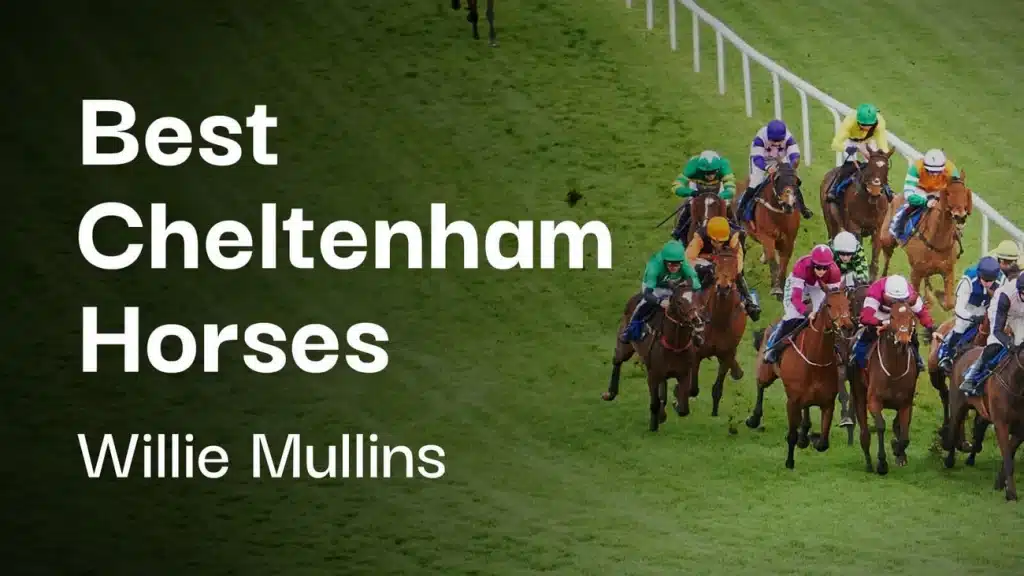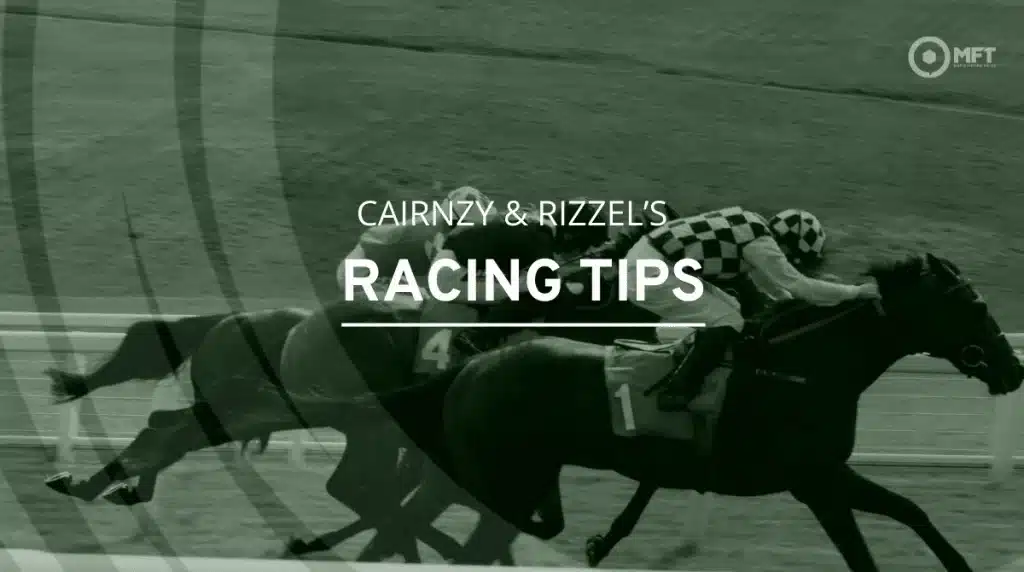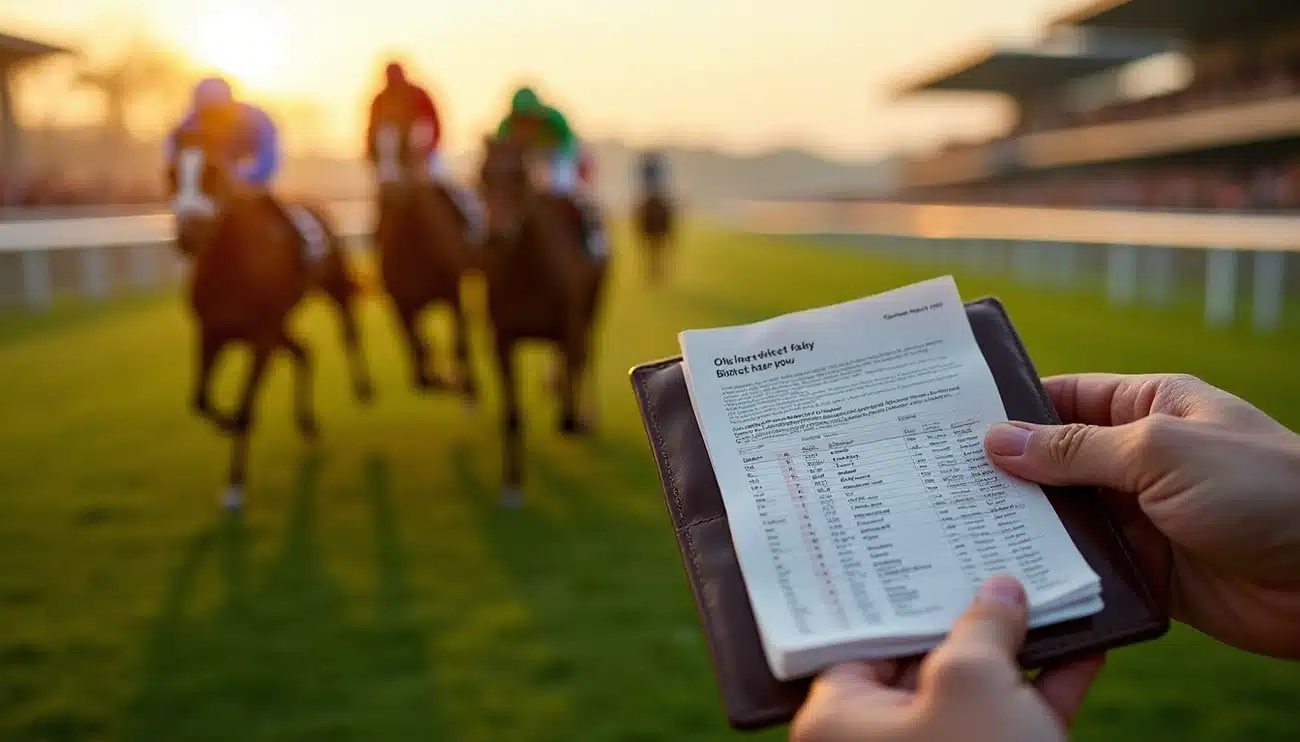Horse racing accumulator tips have made ordinary punters into millionaires overnight. Did you hear about that Yorkshire punter who turned a tiny 50p stake into £1 million with an eight-horse accumulator at William Hill? I still can’t believe it when I think about it!
I’ve been tracking these incredible stories for years now. The odds can be absolutely mind-blowing – like the Devon punter who smashed through 879,138-1 odds to pocket £1,450,000 from a Tote Jackpot at Exeter. Or how about the Leicestershire bloke who bagged £823,000 from just £19 on five horses with Coral?
Here’s what I’ve learned, though – winning accumulators aren’t just about getting lucky. While these stories sound like pure chance, there’s actually a proper strategy behind building successful accas. Want to know something interesting? Windsor has the highest win rate for favourites at a whopping 50%! And Stratford isn’t far behind at 49.11%.
Over the years, I’ve studied hundreds of horse racing accumulator tips and strategies that actually work. I’ve put together this guide to share everything I’ve learned with you. From picking high-strike rate races to following top trainers like W J Haggas (who hit an amazing 57.14% strike rate in April), these 15 expert tips will help you make more money from your betting in 2025.
Whether you’re dreaming of that life-changing win or just want to boost your betting profits a bit, these proven strategies will give you a serious edge. Let’s find some winners together and start building better accas today!
What Makes a Great Horse Racing Accumulator Tip

If you want to build winning horse racing accumulator tips, you need to understand what separates the winners from the losers. I’ve learned that casual punters just pick horses they like, but creating profitable accas needs proper analysis and strategic thinking.
Key traits of winning acca tips
I’ve noticed the most reliable horse racing accumulator tips share certain characteristics that boost their success rate. First, they focus on value rather than just backing favorites. The best tipsters spot horses whose actual chances are better than what their odds suggest.
Winning acca tips usually stick to 4-5 horses at most. This is crucial because of how accumulators multiply your odds – a £10 stake on just four even-money selections can return £160. Every extra leg you add massively cuts your chances of winning.
My most successful accas always prioritise consistency. I look for horses with solid place records rather than chasing longshots. And quality tipsters always explain why they’ve picked each horse, so you can judge if their reasoning makes sense.
How experts evaluate selections
Professional tipsters check multiple factors before adding a horse to an accumulator:
- Ground conditions: How the ground affects performance, especially in winter
- Distance suitability: Every horse has distances they perform best at
- Pedigree analysis: Really important for maiden races and young horses
- Connections: Some trainer/jockey combinations just work better at certain tracks
- Course form: Many horses love particular tracks but hate others
- Handicap considerations: Is the horse’s current mark fair compared to when it last won?
I’ve found that expert tipsters also pay close attention to race types. Small fields with clear favourites have much higher strike rates than big, competitive handicaps.
Common pitfalls to avoid
Despite those tempting big payouts, I see punters making the same mistakes over and over. The biggest error is putting too many selections in one acca – each extra leg massively increases your risk.
Another mistake I often spot is backing lots of short-priced favourites without thinking about value. Combining favourites can work, but if you don’t check the race conditions properly, you’ll end up disappointed.
Finally, never forget to check each race’s specific details like field size and track conditions. And always take early fixed odds rather than waiting for Starting Price (SP) – the prices usually get worse as race time approaches.
When you understand these principles, you’ll be miles ahead of most punters when building your horse racing accumulators in 2025.
Use Data-Driven Tipsters Like OLBG and MyRacing

I’ve found one of the best ways to improve your horse racing accumulator results is by using professional tipsters. Honestly, sites like OLBG and MyRacing have completely changed how I build my accas by giving me a proper structure to follow.
Why follow expert tipsters
Let me tell you – expert tipsters make money consistently because they know their stuff and analyse races properly. When I browse through OLBG’s community, I can find tipsters with really high strike rates and proven profit records. These guys understand things about specific courses and betting patterns that most casual punters like us would never spot.
The best thing? Following established tipsters saves me hours and hours of research time. Instead of trying to analyse loads of races myself, I just tap into their combined knowledge. I love how MyRacing’s experts research every single race, looking at all the stats and trends to give properly explained selections.
How OLBG and MyRacing build their accas
Did you know OLBG automatically creates accumulator tips at certain times each day? They pull these from their most profitable tipsters. Their system is pretty clever – it works out when several successful handicappers agree on the same horses.
Here’s how they do it:
- First, they find the profitable and consistent tipsters for each sport
- Then their system spots when multiple experts pick the same horses
- Their data analytics work out the final consensus picks
- Finally, they create accumulator tips for different bet types (doubles, four-folds, Lucky 15s)
MyRacing does something similar but with their own approach. They look at every UK and Ireland race each day, make a shortlist of potential accumulator horses, and then fine-tune their selections each morning. They try to create accas with odds between 7/1 and 20/1, which I think strikes a good balance between having a decent chance of winning and getting a worthwhile return.
How to verify tipster performance
Want to know if a tipster is worth following? I always check these key things:
- Strike rate: I look at their win percentage for the current month
- Profit trends: I check if they’re making money consistently over 6-12 months
- Value rating: Are they finding horses at better odds than they should be?
- Expert status: I look for tipsters with “Expert” badges based on their verified results
I’ve learned the hard way that you need to track a tipster’s ROI (return on investment) over hundreds of bets to really know if they’re any good. The decent services always show their full records – wins and losses. Be careful of anyone claiming they have both really high win rates AND huge ROI – this combination is extremely rare and usually means something fishy is going on.
In my experience, consistent long-term results tell you much more about a tipster’s real skill than short-term hot streaks, which could just be lucky runs.
Focus on High-Strike Rate Races

Picking races with high strike rates is one of my favourite secrets for winning horse racing accumulators. I’ve learned over the years that some race types just give you much better chances of success, making them perfect for your acca bets.
Which race types have the best strike rates
Did you know that non-handicap races give you much better odds of success than handicaps? The stats don’t lie – favourites win over 34% of all turf flat races in the UK. But here’s the really interesting bit – non-handicap races perform at least 10% better than handicaps when it comes to favourite success rates. That’s a massive difference!
I’ve also noticed something fascinating about race classes. Both the very top and very bottom classes give you great value – Class 1 favourites perform 23% above what the market expects, and the lowest grade races exceed expectations by 25%. Not many punters know this!
And here’s another tip most people get wrong – ground conditions make a huge difference. Everyone thinks firm ground is best for favourites, but I’ve found that favourites on good-to-soft and soft ground often do better. This little nugget alone can give your accumulator tips an edge over the average punter.
Top courses for favourites
Some racecourses are absolute goldmines for favourites. These are my top picks:
- Windsor – An incredible 50.00% win rate for favourites (jumps)
- Stratford – 49.11% success rate with 55 winners from 112 races
- Fakenham – 48.75% win rate over 80 races
- Wetherby – 48.28% for flat racing
- Lingfield – 48.19% on turf
Want an extra edge? Keep an eye on Daniel Skelton at Stratford (he’s won 10 from 11 favourites) and R.M. Beckett at Lingfield (3 from 4). These trainer/course combos are like money in the bank!
How to filter by race quality
To make your horse racing accumulator tips even better, you need to look beyond just basic strike rates. First, make sure you’ve got enough data – I never trust anything with fewer than five starts.
Here’s a simple trick I use all the time: work out the theoretical odds versus actual odds. If a horse has a 25% win rate, it should theoretically be priced at 4/1 or better to represent value. Just divide 100 by the win percentage, and you’ve got your fair price benchmark.
I also always check course characteristics. Take Goodwood for example – that downhill five-furlong finish really suits quality horses, making it profitable for backing favourites (32.6% win rate with £31.48 profit per £1 stake). Not bad at all!
Combine Horses from Different Tracks
One of my favourite strategies for successful horse racing accumulators is spreading my selections across different tracks. I’ve learned over the years that each racecourse has its own personality, with unique characteristics that can make or break your betting slip.
Why spreading across tracks helps
Most experienced punters I talk to focus on specific “circuits” rather than just random tracks. For example, the SoCal circuit includes Santa Anita through June and Del Mar during summer, while the Kentucky circuit covers Turfway, Keeneland, and Churchill Downs. This approach lets you get familiar with the same trainers, jockeys and horses that move between these venues.
But here’s why I always spread my selections across different circuits – if the weather turns bad at one track or there’s an unexpected bias on the day, it won’t sink my entire accumulator. Think about it – multi-track accas give you natural protection against those local problems that can ruin your bet.
Avoiding correlated risks
Have you ever heard betting experts talk about “horse races” in betting portfolios, creating unwanted risk concentration? It’s absolutely true! When all your horses face similar conditions or variables, their outcomes become linked together, creating a nasty domino effect if things go wrong.
That’s why I always pick horses from different tracks in my accas. All those track-specific factors like ground condition, weather, and local biases stay isolated to just one selection rather than potentially ruining your entire bet.
Plus, I’ve noticed that trainers and jockeys often excel at certain tracks but struggle at others. By spreading your selections, you can take advantage of these specialised strengths without putting all your eggs in one basket.
Example of a multi-track acca
Let me share what a good multi-track accumulator might look like from my experience:
- A horse from Keeneland, where I’ve studied trainer W.J. Haggas’ impressive record
- A selection from Santa Anita’s downhill turf course, where course specialists tend to dominate
- A pick from a UK all-weather track like Lingfield for consistency
- A runner from a jumps meeting at a high strike-rate venue like Stratford
This geographic spread ensures that track-specific problems stay isolated, giving your acca a much better chance of success. Before I finalise any of my accumulator horse racing tips, I always make sure I’ve applied this diversification principle – it’s saved me countless times!
Use the Best Horse Racing Accumulator Tips Tools

Having the right tools can make a massive difference to your accumulator betting success. I’ve tried loads of different systems over the years, and honestly, the difference between using proper software and just guessing is night and day.
Top tools for building accas
I’ve found several platforms that really stand out when you’re trying to build winning accumulators. OLBG’s automated accumulator generator is brilliant – it creates daily racing doubles, four-folds, and each-way Lucky 15 tips from their best-performing tipsters. MyRacing is another one I use regularly – they analyse every UK and Irish race each day and build accumulator tips with odds usually between 7/1 and 20/1.
Have you tried FormGenie yet? It uses clever AI algorithms to create handicap and speed ratings, and its top-rated selections win over 40% of races. That’s seriously impressive! For deeper analysis, I sometimes use Proform, which lets you filter the form by ground conditions, class, and distance, plus it has these unique pace ratings that show you how races will likely unfold.
How to use filters and stats
To get the most from these tools, I first work out what type of races I want to focus on. Most of these platforms let you filter by:
- Ground conditions (going)
- Race class
- Distance
- Trainer/jockey combinations
- Number of runners
When I’m using FormGenie, I switch between different modes, including their “Steamers” algorithm that spots market movements. This helps me avoid backing horses that look good on paper but the market has gone cold on.
Racing Post’s accumulator calculator is another one I couldn’t live without – it multiplies the odds of each selection so you can see your potential returns. Perfect for quickly comparing different combinations when I’m in a hurry!
Free vs paid tools
You can definitely find free accumulator tools that give you basic calculations and data. They’re good enough if you’re just having a casual punt. I sometimes use the betting calculators from bettingtools.com to work out potential returns without doing the maths myself – especially handy for those complicated accumulator bets.
But if you’re serious about winning, the paid options are worth every penny. I’ve got a FormGenie annual license, which costs about 68p per day and gives me access to their Steamers mode and Betfair-approved betting bot. Some of my mates have premium subscriptions to Profor, which includes tons of historical data and thousands of race-related insights.
The choice between free and paid really depends on how much betting you do and how serious you are. I started with the free tools but found the paid ones paid for themselves pretty quickly once I started winning more regularly.
Cap Your Accumulator at 4-5 Legs
After trying thousands of different horse racing bets over the years, I’ve found that keeping your acca to 4-5 legs gives you the best chance of actually winning something decent. It’s that sweet spot between getting a nice payout and not being completely unrealistic.
Why fewer legs = higher success
Want to know why the pros rarely go beyond 5 selections? It’s simple maths really. Each extra horse you add to your accumulator tanks your chances of winning. The optimal number of legs for a horse racing accumulator sits between 3 and 5 – this gives you that perfect balance of risk and reward.
Think about it this way – if you’ve got a 4-leg acca where each horse has a 50% chance of winning (which is very optimistic!), you’ve only got a 6.25% chance of the whole thing coming in. That’s why I stick to smaller accas most of the time, despite the temptation of those massive potential payouts.
When to go beyond 5 legs
Are there times when it makes sense to add a few more selections? Absolutely! If you’re betting on small races with strong favourites, you might get away with stretching to 6 horses. And if you’re using acca insurance (which gives you your stake back as a free bet when one leg lets you down), then a 6-leg accumulator becomes much more reasonable.
Some bookies will offer boosted odds on bigger accumulators too. These special promotions can sometimes make it worth taking the extra risk, even though the stats are against you.
Risk vs reward explained
The magic of accumulators is how the odds multiply across each leg. This is how you turn small stakes into potentially big wins. For example, a tenner on four even-money (2.0) selections would return £160 if they all win.
But here’s the brutal truth about accas – they’re all or nothing bets. One loser and your entire stake is gone. That’s why I sometimes use cover bets alongside my main accumulator, and why many professional punters prefer to keep their accas small.
When picking horses for your acca, I always look for small-field races with fewer variables – these typically give you a much better chance of success. And one more tip – always take early fixed odds rather than waiting for Starting Price, as the odds usually get shorter as race time approaches.
Include Horses with Consistent Place Records

I’ve found that consistency is key when building profitable horse racing accumulator tips. After years of placing bets, I’ve seen that horses with solid place records give you the reliability you need for successful accas.
Why does place consistency matter
Have you heard of the Dowst Method? It’s a simple but brilliant horse racing system that proves horses with consistent profiles win more races than those with patchy records. The basic idea is that you should look for horses that have won at least 33% of their career starts and placed in at least 50% of races. This consistency shows the horse performs well under pressure, which cuts down the risk in your accumulator.
I’ve seen this work time and again. Punters who back consistent horses tend to do much better than those chasing the occasional big winner. Take the Group 2 Challenge Stakes at Newmarket – horses like Limato (with a 50% win rate and 75% place rate) proved incredibly reliable compared to runners with lower strike rates.
How to find reliable placers
When I’m looking for reliable placers, I focus on horses with at least a 25% win strike rate and 40 %+ place rate – and obviously, the higher these percentages, the better! I always check these specific conditions:
- Going conditions: How does the horse perform on today’s ground?
- Class level: Has it done well in similar class races?
- Course record: Some horses just love certain tracks
- Distance suitability: Is it consistent at this race distance?
- Field size: Many horses perform differently depending on how many runners there are
I’ve noticed that small-field races with obvious favourites usually give you higher strike rates and more predictable results.
Using each-way logic in accas
Each-way accumulators are a fantastic approach when you’re using consistent placers. These bets split your stake between your selections winning outright and merely placing. It’s like having insurance – if your main accumulator fails by just one runner, but that horse still places, you can still walk away with a profit.
The place part usually pays at reduced odds (typically 1/5 of the win odds for three places). I love this strategy because it balances the excitement of big accumulator returns with sensible risk management. Even when favourites don’t win (which happens all the time!), consistent placers often still get a place, saving parts of your stake.
Use Accumulator Horse Racing Tips with Value Odds
“We aim to balance risk and reward by including shorter-priced favorites alongside potential value picks, maximizing payouts while maintaining realistic expectations.” — Punters Lounge Experts, Professional horse racing tipsters and analysts at Punters Lounge
I’ve learned over the years that value betting is crucial for winning horse racing accumulator tips. The pros all know this secret – finding horses at odds higher than their actual winning chance is how you make money long-term, even if you back fewer winners overall.
What is value betting?
Let me explain value betting in simple terms. It’s when you back horses at odds that are bigger than their true winning probability. Here’s a perfect example – if a horse has a 20% chance of winning but the bookies are offering 10/1 (which suggests only a 9.1% chance), you’ve found yourself a cracking value bet. The brilliant thing is that bookies don’t always get their prices spot on for every runner.
Want to work out if you’ve found value? Just use this simple formula: divide 1 by the decimal odds. So if you’ve got odds of 5.0, that equals a 20% implied probability (1÷5=0.20). This means any horse you reckon has better than a 20% chance of winning is value at those odds!
How to spot overpriced horses
I find the best way to spot value is by creating my own betting forecast (what the pros call “tissue prices”). Here’s how I do it:
- I rate each horse on things like recent form, whether they like the distance, and going preferences
- I give each factor a numerical value
- I add up the total ratings for each runner
- Then I convert these ratings into percentage chances
- Finally, I compare my percentages against what the bookies are offering
The bookies often just look at recent form figures and popular trainers/jockeys when setting their prices. But if you dig deeper into things like how horses perform at specific courses or on certain ground, you’ll find horses whose real chances are much better than what the market suggests.
Balancing value and safety
For Accas specifically, you need to find that sweet spot between value and actually winning. Those 20/1 shots might offer amazing value, but let’s be honest – they’re rarely all going to win in the same acca! I’ve found it’s best to look for modest value in accumulators – aim for odds about 15-20% higher than what you calculate as the true probability.
The expert tipsters at OLBG usually aim for accumulator odds between 7/1 and 20/1. This gives you that perfect balance between picking winners and getting worthwhile returns. It’s this approach that’ll give you the best chance of making consistent profits from your horse racing acca tips.
Avoid Betting on Unfamiliar Courses
“Course and Distance Suitability: Horses that excel on similar tracks or distances.” — Punters Lounge Experts, Professional horse racing tipsters and analysts at Punters Lounge
I can’t stress this enough – knowing your racecourses can make or break your accumulator bets. I’ve seen so many punters lose money simply because they don’t understand how different tracks affect race outcomes.
Why course knowledge matters
Every racecourse has its own personality, trust me on this. Take Epsom for example – that 1m4f Derby course is an absolute monster with a lung-bursting climb followed by that crazy descent through Tattenham Corner. I’ve watched countless good horses struggle badly there.
And have you seen Fontwell? It’s the only figure-of-eight chase course in the country! These unique features create patterns that smart punters like you can use to your advantage. Fontwell shows up all the time in tables of “tough” tracks because it’s so tight – there’s even one fence that comes just 100 yards after a nearly 90-degree turn. When you know these things, you’ve got a serious edge over casual punters.
Courses with unpredictable results
I’ve learned to be really careful with certain tracks that regularly produce falls and surprises:
- Aintree Grand National Course – This is still the toughest jumping test around, with a massive 37.17% of runners making mistakes or falling/unseating
- Fakenham – Always shows up in the “tough track” lists because of those tight turns
- Ludlow – This one’s got much harder in recent years, with better prize money bringing in stronger horses and faster races
Let me tell you about Lingfield – the draw bias there in 5-7 furlong races is huge because high-drawn horses run closer to the rail, giving them a big advantage. If you don’t know this stuff, even your best picks can end up losing.
When to skip a meeting
I always skip meetings where the weather’s changed dramatically. When you get heavy ground or unusually firm going, those draw bias patterns can go completely haywire. At Thirsk, for instance, the normal high-draw advantage often vanishes completely when it’s very soft.
And listen – if you don’t know a course well, it’s usually best to leave it alone. I check weather forecasts religiously because unexpected rain can create massive draw biases on certain parts of tracks. Professional punters track rainfall amounts for exactly this reason.
Want to know my golden rule? If I don’t understand a course inside out, I keep my money in my pocket. There are plenty of races at tracks I know well – why risk my hard-earned cash on guesswork?
Use Acca Tips from In-Form Trainers

I’ve found that following in-form trainers gives you a massive edge when building horse racing accumulators. It’s one of my favourite little secrets! You know what happens? Two horses can look identical on paper, but the trainer’s current form often makes all the difference between winning and losing.
Top trainers in 2025
Looking at the flat racing scene right now, Andrew Balding is absolutely flying at the top of the UK Trainers’ Championship with 17 wins from just 84 runs. Not far behind him is Tony Carroll with 31 wins and 92 places from 191 runs, while K.R. Burke makes up the top three with 14 wins from 50 runs. These guys are smashing it!
For jump racing fans like me, Dan Skelton is the man to follow with a whopping 149 wins and 366 places from 779 runs. Then there’s Paul Nicholls – 14-time Champion Trainer, would you believe? – still showing his class with 73 wins from 394 runs. Nicky Henderson rounds out the top three with 58 wins and 114 places.
How to track trainer form
Want to know a clever trick? Look at the monthly trainer analysis to find profit patterns you can take advantage of. Did you know the top five trainers for May showed a combined profit of +386.78 over five seasons with a 25% strike rate? That’s serious money!
Here’s how I check if a trainer is in form:
- Look at their RTF% (Racing to Form percentage) – anything over 70% means they’re absolutely flying
- Check their 14-day and 30-day stats to spot recent trends
- Stay away from trainers who admit they’re struggling – like Richard Fahey, who recently said his early two-year-olds weren’t as good as he’d hoped
Trainer/jockey combos to watch
I’ve noticed certain trainer-jockey partnerships consistently bring home the bacon. Here are the standouts for 2025:
For jump racing:
- Paul Townend riding for Willie Mullins – these two are like a well-oiled machine!
- Rachael Blackmore with Henry De Bromhead – what a partnership they’ve become
- Harry Skelton partnering with Dan Skelton – keeping it in the family with great results
For flat racing:
- Ryan Moore riding for Aidan O’Brien – simply world-class
- William Buick partnering with Charlie Appleby – consistent winners
- Tom Marquand riding for William Haggas – definitely one to watch
But here’s a little gem I’ve discovered – some lesser-known combinations actually produce amazing results. David Barron and Jamie Spencer achieve a cracking 29% strike rate with +£28.20 profit at Betfair starting prices. Not many punters know about that one!
Time Your Bets for Best Odds
!Image
Image Source: Great Bets
Getting the timing right on your bets can make a massive difference to your accumulator profits. I’ve learned over the years that when you place your bet is just as important as what you’re betting on.
When to bet early vs late
Bookies offer ante-post betting as soon as race declarations come out – sometimes this can be six months before the big races! The main advantage here is that you can often get much better odds before everyone jumps on board and drives the prices down. I’ve seen horses start at 6/1 for the Cheltenham Gold Cup and then shorten to 6/4 after winning a few warm-up races.
But here’s the catch – early betting is risky. If your horse doesn’t run because it gets injured or the trainer decides to enter it in a different race, you’ll lose your stake completely. When you bet on race day, you’re guaranteed to get a run for your money, and you’ll usually get a refund if your horse gets withdrawn.
Most experienced punters I know follow the “bet early or bet late” rule. I usually place my bets about 15 minutes before race time – by then the odds have settled a bit but all the important information is available.
How odds fluctuate on race day
Have you ever noticed how much the odds can change on race day? The morning prices can tell you a lot that other punters miss, while those final odds just before the off show you what the market really thinks.
The biggest odds movements happen on race day, especially in those last few minutes before they jump. Keep your eye on horses that suddenly get popular – if the odds drop dramatically just before the race, it usually means some confident punters with good information are piling in. Bookies update their odds every 30 seconds during busy periods, which gives you plenty of chances to spot good value.
Using odds comparison tools
I always use odds comparison sites like Timeform to find the best prices across different bookies. But finding the highest odds isn’t the whole story – you need to find value bets where the true chance of winning is better than what the odds suggest.
For example, if you think a horse has a 50% chance of winning (which would be fair odds of evens), but the bookies are offering 11/8 (which means they think it’s only got a 42% chance), you’ve found yourself some real value there! When you’re building your accas, if you can combine several selections that all have slightly better odds than their true chances, you’ll create powerful compound value across your bet slip.
I reckon timing your bets right is one of the easiest ways to boost your profits without changing your selections. Just a little bit of patience and good timing can make all the difference between an average return and a great one!
Use Horse Racing Acca Tips with Acca Boosts
!Image
Image Source: British Racecourses
I’ve found that acca boosts are one of the best ways to squeeze extra value from your horse racing accumulator tips. Honestly, it’s like getting free money! These clever little promotions can turn modest returns into much bigger profits without you having to change your selections at all.
What are acca boosts?
Acca boosts are special offers where bookies increase your potential winnings by a fixed percentage when your accumulator wins. The beauty of these promotions is that they scale up with the number of selections, so the more horses you include, the bigger the boost percentage you’ll get!
Using them is dead simple – just build your accumulator as normal, apply the boost before you place your bet, and enjoy the enhanced odds if your horses come in. Just remember that with each-way bets, the boost only applies to the win part, not the place portion.
Top bookies offering them
You might be surprised how many bookies exclude horse racing from their acca promotions, but don’t worry – I’ve found several good sites that still offer valuable horse racing acca boosts:
- Unibet – They give you three daily boosts up to 40% if you go for 7+ leg accumulators
- Bet365 – These guys offer up to 70% on football accas, with different percentages based on selections
- 10bet – They’ll go as high as a 100% boost on 15+ fold accumulators
- Ladbrokes – Look out for their daily Acca Boost tokens
What I love about these is that you get enhanced odds without changing your selections, so your potential returns go up every time your accumulator wins.
How to maximise returns
Want to get the most from these boosts? Here’s what I do:
First, I always check the qualifying criteria carefully – most boosts need minimum odds per selection (usually 1/2 or 1.5) and specific numbers of legs. I also make sure I’m using the right bookmaker for horse racing specifically, as the terms can be really different between them.
Don’t fall into the trap of adding more selections just to get a bigger boost – I’ve found that 5 to 7 legs gives you the best balance between a decent boost percentage and actually having a chance of winning! I save my boost tokens for accumulators I genuinely think can win, rather than wasting them on longshot punts.
One last thing I always check – does Best Odds Guaranteed (BOG) still apply with the boost? Some promotions, like Unibet’s, specifically exclude BOG when using acca boosts, which can make a difference to your returns.
Fancy improving your accumulator returns without any extra work? Acca boosts are definitely the way to go!
Horse racing accumulator tips have made ordinary punters into millionaires overnight. Did you hear about that Yorkshire punter who turned a tiny 50p stake into £1 million with an eight-horse accumulator at William Hill? I still can’t believe it when I think about it!
I’ve been tracking these incredible stories for years now. The odds can be absolutely mind-blowing – like the Devon punter who smashed through 879,138-1 odds to pocket £1,450,000 from a Tote Jackpot at Exeter. Or how about the Leicestershire bloke who bagged £823,000 from just £19 on five horses with Coral?
Avoid Chasing Losses with Bigger Accas

I’ve seen it happen so many times – a punter has a few losers in a row and suddenly they’re placing massive accumulators with 10+ selections trying to win it all back in one go. It’s probably the most dangerous trap in betting, and I’ve fallen into it myself more times than I care to admit!
Why chasing is dangerous
Let me tell you, chasing losses is an absolute nightmare for your bankroll. When you’re on a losing streak, your emotions take over, and your logical thinking goes right out the window. Studies have shown it’s one of the worst habits you can develop as a punter, and it’s incredibly hard to break once you start.
Think about it – after a couple of losers, you feel this urgent need to get your money back straight away. Your brain literally tricks you into believing your next bet is certain to win. I’ve been there, placing rushed bets without any proper analysis just to try and recover what I’ve lost. These panic bets never have the same quality as your carefully planned ones.
How to stay disciplined
Over the years, I’ve developed a few strategies that have helped me avoid the chasing trap:
- Set strict limits – I decide exactly how much I’m betting each day or week and absolutely never go over it, no matter what happens
- Create time boundaries – I only bet during specific times that I’ve set aside, and I make sure I take regular breaks away from gambling
- Record all wagers – I keep a detailed betting diary, noting not just my bets but how I was feeling when I placed them – this has been eye-opening!
- Accept inevitable losses – This is the big one for me – I’ve learned that losing bets are just part of the game, even with the best accumulator tips
You might get lucky chasing losses occasionally, but trust me, you’ll never make money long-term with this approach.
Setting realistic goals
Want to know a simple way to look at accumulator betting? If you place one 20/1 accumulator every week for 40 weeks with the same stake each time, you only need two winners to break even. That’s it! Just two winners out of 40 attempts.
I started seeing much better results when I stopped thinking of betting as a way to get rich quickly and started treating it more like a business investment. Slow and steady really does win the race when it comes to accumulator betting.
Have you ever fallen into the chasing trap? It’s so easy to do, but with a bit of discipline and realistic expectations, you can avoid one of the biggest pitfalls in horse racing betting.
Use Accumulator Tips with Clear Reasoning

I’ve found that the best horse racing accumulators always have solid reasoning behind them. It’s not about picking random horses and hoping for the best – it’s about having clear, logical reasons for every selection you make.
Why reasoning matters
Have you noticed how most betting sites just chuck a list of tips at you with no explanation? This leaves you with no real confidence about why you should back these horses. I hate that! When I follow tipsters, I want them to tell me exactly why a horse deserves a spot in my accumulator.
The way I see it, understanding the thinking behind selections helps you learn which factors actually matter in racing. It’s like giving yourself a racing education with every bet you place.
Some of the top tipsters I’ve followed, like Paul Gargan, always break down their selections with proper analysis. They’ll talk about the going, distance suitability, and other crucial factors that affect the outcome. This lets you check their logic against your own research, which makes for much better betting decisions.
How to evaluate tipster logic
Want to know how I check if a tipster is talking sense? I love using OLBG’s star rating system. It’s brilliant because it compares the percentage of win tips given to a horse against its actual odds. When a horse gets more backing from tipsters than its odds suggest it should, that’s often a sign of a value betting opportunity.
When I’m looking at tipster explanations, I specifically check if they’re talking about:
- How the going conditions affect the horse’s chances
- Whether the distance suits the horse’s running style
- Any course-specific factors that might give an edge
- The history of the trainer/jockey combo
I’ve learned the hard way that the best reasoning always links to actual data rather than just gut feelings or hunches about a horse.
Examples of well-reasoned tips
The difference between a poor tip and a great one is night and day. Instead of just saying “Back Horse X to win,” a quality tipster will tell you something like: “Horse X has won 3 of 4 races on soft ground, is returning to his best distance of 7f, and gets his regular jockey back who rode him to his last two victories.”
See the difference? This gives you real confidence in the selection.
Some services like Horse Logic use fancy mathematical algorithms for their predictions and claim success rates of 61% for winners and 76% for placers. That’s impressive, but I still want them to explain why each selection fits into a successful accumulator strategy. The numbers aren’t enough on their own.
What about you? Do you look for detailed reasoning when following tipsters, or do you just go with the selections? Let me know how you approach your accumulators!
Track Your ROI on Accumulator Bets

Want to know if your horse racing accumulator tips are actually making you money? I’ve found that tracking return on investment (ROI) is the absolute best way to measure your betting success. It’s amazing how many punters just count wins and losses without looking at the actual money side of things!
What is ROI in betting?
ROI is simply how much money you win or lose compared to what you’ve put in. I love using ROI because it gives you a clear percentage figure rather than just a vague idea of whether you’re up or down.
For example, a friend of mine thought he was doing well because he’d hit 3 accumulators in a month, but when we calculated his ROI, he was actually down 7%! That’s the brutal truth: ROI gives you – are your horse racing accumulator tips really profitable, or are you just remembering the big wins and forgetting all the losses?
If you’re seeing a positive ROI, your strategy is working. If it’s negative, something needs to change. It’s that simple!
How to calculate it
Here’s the formula I use for working out ROI on my horse racing accumulators: ROI = (Net Profit / Total Amount Wagered) × 100
Let me give you a real example. Last month, I placed ten £39.71 accumulator bets (that’s £397.08 total) and made £19.85 profit. My ROI was 5%. Not amazing, but still in the green!
To track your own ROI properly:
- Record every single accumulator bet you place (I use a simple spreadsheet)
- Work out your net profit by taking away your total stakes from your winnings
- Pop these numbers into the formula and see your percentage return
Did you know that professional punters consider anything above 5% from about 3,000 bets to be a fantastic ROI? That would put you among the best sports bettors in the world!
Using ROI to refine strategy
The best thing about tracking your ROI is how it shows you which types of accumulators are actually making you money. I discovered my 4-leg accas were making a nice profit while my 5-leg attempts were burning money!
When analysing your ROI, I recommend looking at:
- At least 100+ bets for reliable data (don’t judge based on just a few accas)
- Monthly patterns (I found I do better in summer months)
- Different acca structures (try comparing Lucky 15s versus straight accumulators)
- Performance at different racecourses (my Cheltenham picks have a much better ROI than my Ascot ones)
Most importantly, don’t get too excited or too down about short-term results. I once had a 200% ROI for two weeks, then went six weeks without a winner! It’s the long-term trends that really matter for accumulator betting.
Comparison Table
I’ve put together this handy table to summarise all the tips I’ve shared with you. This is basically my cheat sheet for building winning accumulators – I refer to it myself when I’m putting together my weekend accas! Have a look through and see which strategies you might want to try first:
| Tip | Key Benefit | Success | Risk Level | Recommend |
|---|---|---|---|---|
| What Makes a Great Horse Racing Accumulator Tip | Improved success rate | Value over favorites | Moderate | Focus on clear reasoning and methodical analysis |
| Use Data-Driven Tipsters | Consistent profitability | Expert analysis | Low | Follow OLBG and MyRacing tipsters with verified records |
| Focus on High-Strike Rate Races | Higher win probability | Non-handicap races | Low | Target Windsor (50%) and Stratford (49.11%) success rates |
| Combine Horses from Different Tracks | Reduced correlated risks | Geographic diversification | Moderate | Spread selections across different circuits |
| Use Best Horse Racing Accumulator Tools | Better data analysis | Automated insights | Low | Utilize FormGenie (40%+ win rate) and Proform |
| Cap Your Accumulator at 4-5 Legs | Balanced risk-reward | Optimal leg count | Moderate | Value over favourites |
| Include Horses with Consistent Place Records | Reliability | 33%+ win rate, 50%+ place rate | Low | Limit to 4-5 selections for a 6.25% success chance |
| Use Value Odds | Long-term profitability | Odds vs probability | Moderate | Seek 15-20% higher odds than calculated probability |
| Avoid Unfamiliar Courses | Reduced uncertainty | Course knowledge | High | Skip meetings with dramatic weather changes |
| Use In-Form Trainers | Higher win probability | Current form | Low | Focus on horses with 25 %+ win strike rates |
| Time Your Bets | Better odds | Market timing | Moderate | Bet 15 minutes before race time |
| Use Acca Boosts | Enhanced returns | Promotion optimization | Low | Apply boosts to 5-7 leg accumulators |
| Avoid Chasing Losses | Maintained discipline | Risk management | High | Set strict daily/weekly betting caps |
| Use Clear Reasoning | Informed decisions | Transparent analysis | Low | Verify logic against historical data |
| Track ROI | Performance measurement | Financial analysis | Low | Target 5%+ ROI over 3,000+ bets |
You don’t need to implement all these tips at once – even just picking 3 or 4 of them will seriously improve your results. I’d suggest starting with the low-risk strategies first, then gradually add the moderate ones as you get more confident. The high-risk ones need extra care, but they’re worth considering once you’ve got some experience under your belt.
Fancy a chat about which of these might work best for your betting style? Drop me an email and I’ll help you put together a plan that works for you!
Horse Racing Accumulator Tips – Conclusion
I’ve shared loads of strategies with you throughout this guide that can really change how you approach horse racing accumulators. These aren’t just theories I’ve made up – they’re proven techniques used by successful punters (including me) who’ve been making money from their betting for years.
Your betting journey should start with understanding what makes winning accumulator tips actually work. I’ve found that data-driven approaches are what separate the pros from the amateurs in this game. When you focus on high-strike rate races at tracks like Windsor (50%) and Stratford (49.11%), you’ll dramatically boost your chances of winning.
Managing your risk is absolutely crucial if you want long-term success. I’ve learned the hard way that capping your accumulators at 4-5 legs gives you the perfect balance between getting decent returns and actually having a realistic chance of winning. It’s so tempting to add more selections for bigger returns, but trust me – this approach massively reduces your chances of success.
Value betting is another strategy I swear by. You need to find horses whose true winning probability is better than what their odds suggest, rather than just blindly backing favourites. You might get fewer winners at first with this approach, but it’s the only way to ensure you make money over time.
Do you know your courses? You should! Some tracks consistently produce predictable results while others are total chaos. Avoiding unfamiliar courses or ones where the weather’s changed dramatically will protect your betting bank from unnecessary risks.
Finally, are you tracking your ROI? You should be! Most professional bettors consider a 5% return over thousands of bets to be exceptional. This analytical approach helps you refine your strategy based on actual evidence rather than just gut feeling.
These fifteen expert tips represent years of hard-earned wisdom from successful horse racing bettors like myself. You don’t need to implement all these strategies at once – even using just a few will significantly improve your results. Above all, remember that successful accumulator betting requires patience, discipline, and a methodical approach rather than chasing dreams of getting rich overnight.
Will your next accumulator turn pennies into pounds? The strategies I’ve shared will definitely improve your chances. But remember, consistent profits come through disciplined application of these principles rather than just getting lucky. Fancy giving these tips a try? Let’s find some winners together!
Horse Racing Accumulator Tips – FAQs
Q1. What is a Lucky 15 bet in horse racing? A Lucky 15 is a popular multiple bet involving 4 selections across 15 individual bets – 4 singles, 6 doubles, 4 trebles, and 1 four-fold accumulator. You only need one selection to win to get a return.
Q2. How can I improve my chances of winning a place accumulator? To win a place accumulator, focus on selecting horses likely to finish in the top 3 positions across all designated races. Study form, course records, and jockey/trainer combinations to identify consistent placers.
Q3. What factors should I consider when predicting horse racing winners? Key factors include studying the horse’s recent form, analysing its performance at similar distances and track conditions, considering the jockey and trainer’s records, and evaluating the horse’s odds compared to its true winning chances.
Q4. How many selections should I include in my horse racing accumulator? For the best balance of risk and potential returns, limit your accumulator to 4-5 selections. This approach offers a realistic chance of winning while still providing substantial payouts if successful.
Q5. Why is it important to track Return on Investment (ROI) for accumulator bets? Tracking ROI helps you measure the true profitability of your betting strategy over time. It provides a clear financial perspective beyond simple win-loss records, allowing you to refine your approach and identify which types of accumulators are most successful for you.




